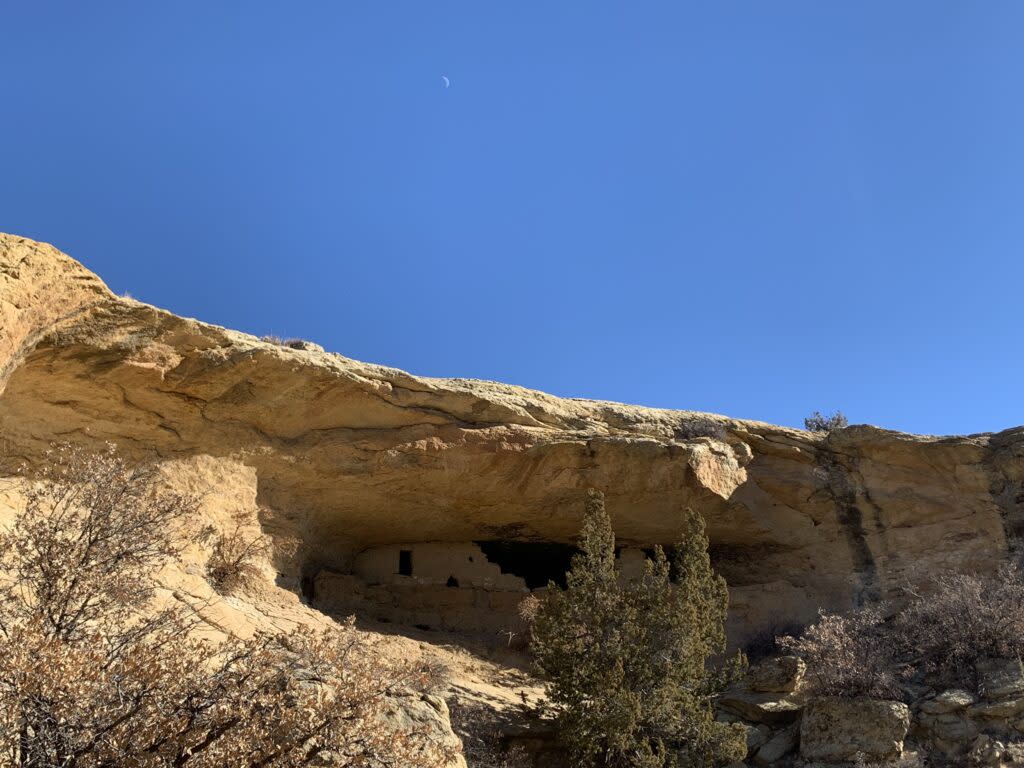Santa Ana Pueblo takes back ancestral land, declares conservation efforts, trespassing enforcement

Architectural ruins located in Tamaya Kwii Kee Nee Puu. (Photo courtesy of Santa Ana Pueblo)
An area of high desert hills and prairie near Albuquerque which was once called Alamo Ranch will again be known by its original name: Tamaya Kwii Kee Nee Puu.
The 60,000 acres represent ancestral farming and hunting grounds of the “Tamayame,” the original Keres word for the people of the land. Spanish conquistadors later renamed the place after the Catholic patron Saint Anne.
The people renamed by colonizers on Wednesday officially reacquired more than 100 square miles of the ancestral land where Santa Ana Pueblo citizens will continue to live with the land to hunt, produce clay for pottery and minerals for other ceremonial uses, said Jay Garcia, a former lieutenant governor and council member with the tribe.
Pueblo officials bought the land from the family of former New Mexico Gov. Bruce King in 2016, the Associated Press reported. The King family used it as a cattle ranch, but realized the Pueblo had ancestral ties to the land, and would be the correct stewards of it, Garcia said.
The sale was historic, he said, in the sense that a tribe had the means and ability to purchase back ancestral land. They didn’t need a loan or to beg anyone for the money to pay for it, Garcia said.
Eight years later, the Pueblo and the federal government signed the land into trust, meaning it cannot be sold again in the future.
“It means that it’s returned to us forever, versus just owning the property where it could be sold, or future generations could have a different idea for it,” he said. “It means we can continue full force with our conservation efforts.”
On Wednesday morning, Santa Ana Pueblo officials were joined by the Southwest Regional Office of the U.S. Bureau of Indian Affairs to host a fee to trust signing ceremony at the Prairie Star Restaurant, according to a news release.
Our Land reports the Pueblo is using traditional knowledge and western science to heal the land after it was aggressively grazed for more than a century.
After the sale and even before the land was put into trust, its name wasn’t the only thing that changed.
“The elk have returned, the deer has returned, the antelope have returned, the bobcats, the mountain lions have returned,” Garcia said. “They’re not competing for the grass anymore.”
The area includes two mesas where Tamayame lived, architectural ruins, and springs where water comes up from the earth, Garcia said.
There are many Non-Pueblo trespassers who want to ride all-terrain vehicles and dump trash on the land, Garcia said. The trust gives the Pueblo authority to protect it without having to wait for the Sandoval County Sheriff’s Office, he said.
“We have established conservation law enforcement, as well as tribal police, so now we can police our own property, and enforce it within tribal court,” he said.
Looking to the future, Garcia said the Pueblo will leave the land in its natural state while working to develop and protect it so that members and animals can use it.
“We have no plans for any economic development — we’re not going to build houses out there, we’re not going to put a casino out there,” he said. “Whether it’s five, 10, 20, 50, 100 years from now, we will keep it in pristine condition.”
GET THE MORNING HEADLINES DELIVERED TO YOUR INBOX
The post Santa Ana Pueblo takes back ancestral land, declares conservation efforts, trespassing enforcement appeared first on Source New Mexico.


